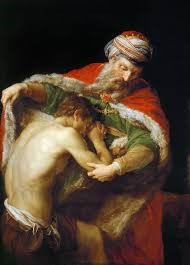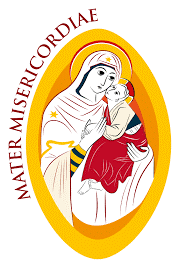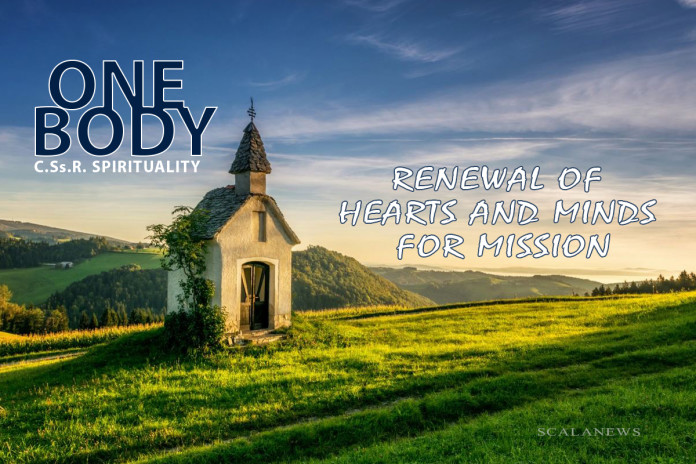Present situation
We are living in a world that for a long time now has been defined as a “global village”. With the modern tools of communication and transportation we can travel and witness almost every event as it happens in the world today. We observe that there is a greater freedom of expression and a better recognition of rights, at least in some parts of the world. On the other hand there is a growing individualism that permeates almost every structure of human activity and leads to an increasing sense of isolation, loneliness and a deep search for “meaning”.
In the Church, we have a “new Pope” who surprises us quite often with his openly expressed opinions and judgments. His documents, such as, Evangelii Gaudium, Misericordiae Vultus and Laudato Sì, give us an indication of the “preferences and style” by which he intends to lead the Church. The Synod of Family was concluded. Around the same time, the Year of Consecrated Life, that invited us to “awake the world”, was also concluded. In our Congregation we are currently celebrating the Jubilee Year of the Icon of Mother of Perpetual Help and preparing for the 25th General Chapter. It is in this context that we, as Redemptorists, are celebrating the extraordinary Jubilee Year of Mercy.
 The theme of renewal of hearts and minds has appeared many times in our debates, meetings and discussions in the last sexennium. As we prepare to celebrate the next General Chapter perhaps it is worthwhile to pause and once again ask ourselves: “are we people of renewed hearts and minds, ready to proclaim Jesus’ Gospel in today’s rapidly changing world? What is the driving force that permeates us as we involve ourselves in the restructuring process? Is it for us just a matter of changing the structures or perhaps can we find within ourselves a deeper conviction that we are on path set out for us by the Lord?
The theme of renewal of hearts and minds has appeared many times in our debates, meetings and discussions in the last sexennium. As we prepare to celebrate the next General Chapter perhaps it is worthwhile to pause and once again ask ourselves: “are we people of renewed hearts and minds, ready to proclaim Jesus’ Gospel in today’s rapidly changing world? What is the driving force that permeates us as we involve ourselves in the restructuring process? Is it for us just a matter of changing the structures or perhaps can we find within ourselves a deeper conviction that we are on path set out for us by the Lord?
Challenge of conversion
Our Constitutions refer to us “apostles of conversion” and set as the chef object of our preaching the ability to lead the people in such a way that they may make a radical choice regarding their life: a decision for Christ (cf., C. 10 – 12).
This constitutes a real challenge in our missionary life but we should never forget that before leading others to conversion we ourselves must also be converted and made our radical decision for Christ. We cannot give to others what we simply do not have ourselves.
The challenge of conversion does not consist mainly in changing structures but above all it consists in an awareness of the presence of the Redeemer in the midst of our communities. Constitution 23 reminds us that in our following of Jesus Christ we enter into an intimate and personal contact with Him who is present in the heart of every community to form and sustain it.
It is the person of the Redeemer that inspires and encourages us in our conversion. He also invites us to undertake the initiatives that relate to our life and our structures (cf., C. 23). He leads us in our commitment to proclaim His plentiful redemption to the people of today’s world. It is only in this context that the discussion about new methods and new structures make sense.
Touched by redemption and mercy
 Renewal for us as Redemptorists should be understood as a process through which, by reading the signs of times, we are called to respond to the needs of those who has been entrusted to us by Church or those who have been excluded by today’s world, who live on the margins – the abandoned.
Renewal for us as Redemptorists should be understood as a process through which, by reading the signs of times, we are called to respond to the needs of those who has been entrusted to us by Church or those who have been excluded by today’s world, who live on the margins – the abandoned.
Sharing in the mission of the Redeemer is the unifying principle of our various commitments (cf., C. 52) and the very purpose of the renewal of our hearts and minds to which we are called, including the process of restructuring.
While it is true that we live our charism through the various ministries we engage in, what unifies us as Redemptorists is that we are all called to be missionaries of redemption and mercy.
Yet if we are to continue the mission of Jesus in our world today, if we are to preach mercy and plentiful redemption, we must first of all be touched, or allow ourselves to be touched, in our own individual lives by this redemption and mercy. Has this happened to us? Are we on fire with God’s love, so much so that we can’t wait to share this?
Misericordiae Vultus
On March 13, 2015, Pope Francis proclaimed the Extraordinary Jubilee Year of Mercy with the Bull Misericordiae Vultus issued two days previously.
The content of the Bull finds its sense and meaning in an important passage located in the Exhortation Evengalii Gaudium that somehow constitutes the program of the Petrine ministry of Francis and can be also very challenging to us as Redemptorists. “The Church which “goes forth” is a community of missionary disciples who take the first step, who are involved and supportive, who bear fruit and rejoice. An evangelizing community knows that the Lord has taken the initiative, he has loved us first (cf. 1 Jn 4:19), and therefore we can move forward, boldly take the initiative, go out to others, seek those who have fallen away, stand at the crossroads and welcome the outcast. Such a community has an endless desire to show mercy, the fruit of its own experience of the power of the Father’s infinite mercy” (EG 24).
Misericordiae Vultus, from the very beginning, makes it very clear whom we should look to in order to find the source of Mercy. Jesus Christ is the face of the Father’s mercy (…) Jesus Christ, by his words, his actions, and his entire person reveals the mercy of God (MV 1). But it also defines mercy as a fundamental law that dwells in every human being’s heart: We need constantly to contemplate the mystery of mercy. It is a wellspring of joy, serenity, and peace. Our salvation depends on it. Mercy: the word reveals the very mystery of the Most Holy Trinity. Mercy: the ultimate and supreme act by which God comes to meet us. Mercy: the fundamental law that dwells in the heart of every person who looks sincerely into the eyes of his brothers and sisters on the path of life. Mercy: the bridge that connects God and man, opening our hearts to the hope of being loved forever despite our sinfulness (MV 2).
No doubt we have read this document with great interest and we are all inspired by it. I would just like to point out some images and aspects that might refer specifically to our charism and our mission in the world.
Images: pilgrimage and holy door (cf., MV 14).
Pilgrimage
Each of us is a pilgrim. As human beings we all walk on the path of life in search of truth, meaning and beauty. Our life is a journey and the idea of pilgrimage expresses that truth well. To move forward is not merely moving towards a place geographically or reaching a destination but moving forward is a task that is given for life.
In our Redemptorist world, both locally and globally, we are also on pilgrimage. We all have our own little or large responsibilities: goals to reach, tasks to complete, decisions to make. We remember those who have walked before us and one day generations to come will remember us who carried the mission of the congregation before them.
It is crucially important that we remember that our pilgrimage is not a vacation. We are not gathered together as missionaries to admire the sights. We have been sent to follow the Holy Redeemer who leads us and talks to us on that pilgrimage. As we walk we meet the world and people on their own pilgrimages. We get the sense that we are part of something bigger, something we cannot simply ignore it (cf., C. 1).
Along the way we meet people that are in need of Jesus’ mercy and forgiveness. We meet people that come to us in their search for truth and meaning. In our encounters, we also realize that we, too, are in need of mercy.
As we make our pilgrimage as a congregation we have to discern if our journey is truly a pilgrimage. We have to be able to follow the footsteps and the voice of the One who leads us. On our pilgrim way as missionaries, we are asked to be merciful, to show mercy to those who are in need of love, compassion, forgiveness and truth – especially the most abandoned (cf., C. 3).
Pilgrimage also includes the possibility of conversion. A pilgrim is invited to conversion of his mind and heart in such that it leads to a deeper relationship with God. A pilgrimage is a parable of faith and hope; it is a parable of expectation and the future (cf., C. 40-42).
Finally we realize that every pilgrimage reminds us of the Pasqual Mystery of Jesus. We have to pass from death to life; from darkness to light; from the security of the old and established world to one that is new and full of challenges.
Door
In life we pass through many doors: wide or narrow, old or new. Usually we do not even think about crossing the threshold of a door as having any meaning or symbolism.
When a door is closed it indicates a particular reality – a place that we cannot enter. When a door is open, it invites us to pass from where we are to something new; from one room to another; from one reality to another one.
In the Christian tradition, the image of “door” evokes the passage from sin to grace which every Christian is called to undertake. Jesus said: “I am the door” (Jn 10,7). To pass through that “door” means to confess that Jesus is the Lord. It is a decision which presumes the freedom to choose and also the courage to leave something behind, in the knowledge that what is gained is divine life (cf., Incarnationis Mysterium 8).
The door symbolizes a new access to Christ the Redeemer who calls everyone, without excluding anybody, to participate in the fruits of the Redemption of the Lord and in His mercy.
In our Redemptorist world, as missionaries of mercy of the Lord, we are invited to keep the doors of our churches and houses wide open. It is crucially important that those who are in need of mercy can come to us and feel welcomed.
It is not an easy task to open the door and make ourselves available: to be there to welcome and offer what we have to offer most – the mercy of God and a word of comfort.
Keeping the door open involves a risk that those from the outside can see what perhaps we would rather they did not see. But this is not of great importance. The most important thing is that when we open the door we will realize how many are those who are in need of God’s mercy, love and compassion. And this will put to the test our zeal, our faithfulness and also the structures we use for evangelizing those who are abandoned and poor. Perhaps we might realize that our “little” missionary world is so well set up and so perfectly protected with “holy” structures that those who are searching God’s mercy do not well welcome and perhaps can receive only a crumb from the Lord’s table.
We are all invited to become more aware that it is not us that the people really long for but it is God’s mercy and forgiveness that they truly desire. We just have to have the courage to open the door and give them “Who” they truly look for.
Do you see and understand your spiritual life as “pilgrim-like”? Are you ready to open the door of your life to those who are searching for Jesus’ mercy and compassion? Do the structures that surround you in your Redemptorist life facilitate your availability for the mission of the Congregation in your Unit and in the worldwide Congregation?
Before the Icon
 As we continue the celebration of the Jubilee of the Icon of Mother of Perpetual Help we want to entrust to Her our mission in the Church and all those who are searching for Jesus’ mercy and forgiveness. With our hearts and minds renewed let us put all our trust in Her who is also called Mother of Mercy. Let us unite our hearts and minds with the words of Pope Francis:
As we continue the celebration of the Jubilee of the Icon of Mother of Perpetual Help we want to entrust to Her our mission in the Church and all those who are searching for Jesus’ mercy and forgiveness. With our hearts and minds renewed let us put all our trust in Her who is also called Mother of Mercy. Let us unite our hearts and minds with the words of Pope Francis:
“My thoughts now turn to the Mother of Mercy. May the sweetness of her countenance watch over us in this Holy Year, so that all of us may rediscover the joy of God’s tenderness. No one has penetrated the profound mystery of the incarnation like Mary. Her entire life was patterned after the presence of mercy made flesh. The Mother of the Crucified and Risen One has entered the sanctuary of divine mercy because she participated intimately in the mystery of His love. (…) Let us address her in the words of the Salve Regina, a prayer ever ancient and ever new, so that she may never tire of turning her merciful eyes upon us, and make us worthy to contemplate the face of mercy, her Son Jesus” (MV24).
—————————————————————————————————
ONE BODY is a monthly text of prayer proposed by the Center for Redemptorist Spirituality. For more information: Piotr Chyla CSsR (Director of the Center for Spirituality fr.chyla@gmail.com ).






